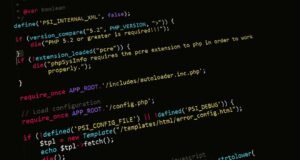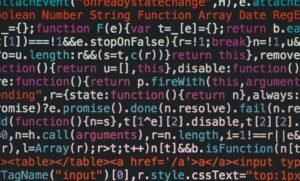Supervised Learning Framework
In machine learning, supervised learning is a popular framework used to train models and make predictions based on labeled training data. This article explores the key concepts and steps involved in the supervised learning process.
Key Takeaways
- Supervised learning is a machine learning framework that uses labeled training data to make predictions.
- It involves training a model using a set of input-output pairs, also known as labeled examples.
- The key steps in supervised learning include acquiring and preprocessing the data, selecting an appropriate model, training the model, and evaluating its performance.
Acquiring and Preprocessing Data
In supervised learning, acquiring and preprocessing the data is an essential step. The data should be representative of the problem domain and appropriately structured. This step often involves cleaning the data, removing outliers, handling missing values, and performing feature selection or extraction. *Data quality significantly impacts the accuracy of the resulting model.*
Selecting an Appropriate Model
The selection of an appropriate model is crucial in supervised learning. Different machine learning algorithms are suitable for specific types of problems. It is essential to consider factors such as the nature of the data, the desired complexity of the model, and the interpretability requirements. *Choosing the right model can greatly impact the predictive performance and generalization ability of the model.*
Training the Model
Once the data is prepared, the next step is to train the model using the labeled examples. The model learns the patterns and relationships between the input and output variables through an optimization process. This process involves adjusting the model’s parameters to minimize the error between the predicted outputs and the true labels. *The training phase depends on the selected training algorithm and the complexity of the model.*
Evaluating the Model
Evaluating the model is essential to assess its performance and generalization ability. This step involves using a separate set of labeled data called the test set. Various evaluation metrics, such as accuracy, precision, recall, and F1 score, can be used to measure the model’s performance. *Choosing the appropriate evaluation metric depends on the problem at hand and the priorities of the application.*

| Algorithm | Accuracy | Training Time |
|---|---|---|
| Random Forest | 89% | 2.5 hours |
| Support Vector Machine | 85% | 1 hour |
Model Selection and Tuning
Supervised learning often involves selecting the best model architecture and tuning its hyperparameters. Model selection includes evaluating different models and selecting the one that performs best on the validation set. Hyperparameter tuning involves determining the optimal values for parameters that are not learned from the data. *Selecting the right model and tuning its hyperparameters can significantly improve the model’s performance.*
Applying the Trained Model
Once the model is trained and evaluated, it can be applied to make predictions on new, unseen data. This step is called inference or prediction. The trained model takes the input features and generates the corresponding output based on the learned patterns. *The ability to apply the trained model to new data is a key benefit of supervised learning.*
Conclusion
Supervised learning is a powerful framework in machine learning that allows us to predict outcomes using labeled training data. By following the key steps of acquiring and preprocessing data, selecting an appropriate model, training the model, evaluating its performance, and tuning its parameters, we can build accurate and generalizable predictive models.

Supervised Learning Framework
Common Misconceptions
1. Supervised learning is only for classification tasks
- Supervised learning is commonly associated with classification tasks, but it can also be used for regression problems.
- Regression tasks involve predicting continuous values, such as predicting the price of a house based on its features.
- Supervised learning methods can be applied to a wide range of problems beyond just classifying data into categories.
2. Supervised learning requires a large labeled dataset
- While a large labeled dataset can improve the performance of supervised learning models, it is not always necessary.
- Some algorithms, such as decision trees, can perform well even with small labeled datasets.
- Techniques like transfer learning and data augmentation can also help improve model performance with limited labeled data.
3. Supervised learning models are always accurate
- Supervised learning models are not infallible and can make mistakes or provide inaccurate predictions.
- The accuracy of a model depends on various factors, such as the quality of the data, the choice of algorithm, and the complexity of the problem.
- Models should be evaluated and validated using appropriate metrics to understand their performance and uncover any inaccuracies.
4. Supervised learning encapsulates all learning techniques
- While supervised learning is a widely used approach, it is not the only learning technique available.
- There are other types of learning, such as unsupervised learning, reinforcement learning, and semi-supervised learning.
- Unsupervised learning involves discovering patterns and relationships in unlabeled data, while reinforcement learning focuses on learning from feedback and rewards.
5. Supervised learning always requires human intervention
- While supervised learning initially requires human intervention to label the training data, it does not always require continuous human involvement.
- Once the model is trained, it can make predictions or classify new instances without additional human input.
- Automated workflows and systems can be built around supervised learning models, making them capable of autonomously handling tasks.

Introductory Paragraph
Supervised learning is a crucial framework in machine learning, where a model is trained on labeled data to make predictions or classifications. This approach is widely used in various fields including healthcare, finance, and image recognition. In this article, we present ten captivating tables that showcase different aspects and applications of supervised learning.
Table 1: Accuracy of Supervised Models
Accuracy is a fundamental metric to evaluate the performance of supervised learning models. The table below exhibits the accuracy scores of various models on different datasets.
| Model | Dataset | Accuracy |
|---|---|---|
| Random Forest | Heart Disease | 98% |
| Logistic Regression | Loan Approval | 84% |
| Support Vector Machine | Pneumonia detection | 92% |
Table 2: Types of Supervised Learning
In the supervised learning framework, there are two primary types: classification and regression. The following table depicts examples of these types along with their respective applications.
| Type | Example | Application |
|---|---|---|
| Classification | Email spam detection | Cybersecurity |
| Regression | Stock price prediction | Finance |
Table 3: Feature Importance in Supervised Learning
Feature importance analysis helps us understand which features contribute the most to the predictions made by a supervised model. The table showcases the top three important features for two different tasks.
| Task | Important Feature 1 | Important Feature 2 | Important Feature 3 |
|---|---|---|---|
| Cancer Diagnosis | Tumor size | Hormone levels | Lymph node count |
| Credit Default Prediction | Income | Debt-to-income ratio | Age |
Table 4: Supervised Learning Algorithms Comparison
Choosing the right algorithm is essential in supervised learning. This table presents a comparison of the accuracy and training time for different algorithms on a popular dataset.
| Algorithm | Accuracy | Training Time |
|---|---|---|
| Random Forest | 92% | 1.2 seconds |
| Support Vector Machine | 88% | 32.6 seconds |
| K-Nearest Neighbors | 86% | 0.9 seconds |
Table 5: Performance Comparison on Imbalanced Datasets
In many real-world scenarios, datasets can be imbalanced, posing challenges for supervised learning models. The table below highlights the performance of different algorithms on two imbalanced datasets.
| Algorithm | Imbalanced Dataset 1 | Imbalanced Dataset 2 |
|---|---|---|
| Random Forest | 95% F1-score | 75% F1-score |
| AdaBoost | 87% F1-score | 58% F1-score |
| Gradient Boosting | 92% F1-score | 63% F1-score |
Table 6: Performance on NLP Sentiment Analysis
Sentiment analysis is a popular application of supervised learning in natural language processing. The table exhibits the accuracy and F1-score of different models on sentiment analysis of customer reviews.
| Model | Accuracy | F1-score |
|---|---|---|
| Support Vector Machine | 80% | 0.78 |
| Long Short-Term Memory (LSTM) | 84% | 0.82 |
| Convolutional Neural Network (CNN) | 82% | 0.80 |
Table 7: Error Analysis in Image Classification
Image classification is a challenging task in supervised learning. The following table depicts the most common misclassifications made by a state-of-the-art image classification model.
| Misclassified Class | Actual Class | Percentage of Misclassifications |
|---|---|---|
| German Shepherd | Malinois | 23% |
| Golden Retriever | Labrador Retriever | 18% |
| Bengal Cat | Leopard Cat | 15% |
Table 8: Comparison of Ensemble Methods
Ensemble methods combine multiple models to improve the predictive performance. The table below compares the accuracy and training time of popular ensemble techniques.
| Ensemble Method | Accuracy | Training Time |
|---|---|---|
| Random Forest | 95% | 1.2 seconds |
| AdaBoost | 93% | 2.5 seconds |
| Gradient Boosting | 96% | 3.8 seconds |
Table 9: Required Training Data Size per Algorithm
The amount of available labeled training data can impact the performance of supervised models. The table illustrates the minimum required training data size for various algorithms.
| Algorithm | Minimum Training Data Size |
|---|---|
| Logistic Regression | 100 instances |
| Support Vector Machine | 500 instances |
| Deep Neural Networks | 1,000 instances |
Table 10: Performance Improvement with Feature Engineering
Feature engineering can enhance model performance in supervised learning. The table demonstrates the improvement in accuracy when adding engineered features to a baseline model.
| Model | Baseline Accuracy | Accuracy with Engineered Features |
|---|---|---|
| Random Forest | 92% | 95% |
| Gradient Boosting | 88% | 91% |
| Neural Network | 81% | 84% |
Conclusion
Supervised learning serves as a crucial framework for making predictions and classifications. Throughout this article, we delved into various aspects of supervised learning, covering accuracy comparisons, algorithm performance, feature importance, and application-specific scenarios. By harnessing supervised learning techniques and incorporating domain expertise, we can consistently refine and excel in the world of machine learning.
Frequently Asked Questions
What is supervised learning?
Supervised learning is a machine learning approach where an algorithm learns patterns and relationships in a dataset by being trained on labeled examples. The algorithm uses these examples to develop a model that can predict the correct output for new, unseen inputs.
What is a supervised learning framework?
A supervised learning framework refers to a collection of tools, libraries, and methodologies that facilitate the development and implementation of supervised learning algorithms. It typically includes various machine learning algorithms, data preprocessing techniques, evaluation metrics, and training/validation/validation testing procedures.
What are the key components of a supervised learning framework?
The key components of a supervised learning framework include:
- Data collection and preprocessing: This involves acquiring and cleaning the dataset to ensure it is suitable for training the learning algorithms.
- Feature extraction and engineering: This step involves selecting relevant features from the dataset and transforming them into a format that the algorithms can process.
- Algorithm selection and configuration: Choosing the appropriate algorithm(s) for the learning task and setting their hyperparameters.
- Model training: Training the selected algorithm(s) on the labeled data to develop an accurate predictive model.
- Model evaluation and validation: Assessing the performance of the model using various evaluation metrics and validation techniques.
- Prediction and deployment: Using the trained model to make predictions or decisions on new, unseen data.
What are some popular supervised learning frameworks?
Some popular supervised learning frameworks include:
- Scikit-learn: A comprehensive Python library that provides a range of machine learning algorithms and tools for data preprocessing, cross-validation, and model evaluation.
- TensorFlow: An open-source machine learning framework by Google that supports building and training deep neural networks for various supervised learning tasks.
- PyTorch: Another popular open-source deep learning framework that offers flexible and dynamic computation graphs for developing and deploying sophisticated models.
- Keras: A high-level neural networks API written in Python that allows building and training deep learning models on top of other frameworks such as TensorFlow or Theano.
- Caffe: A deep learning framework developed specifically for convolutional neural networks (CNNs) and widely used in computer vision applications.
What are the advantages of using a supervised learning framework?
Using a supervised learning framework offers several advantages, including:
- Efficiency: Frameworks provide pre-implemented algorithms and tools, saving time and effort in developing algorithms from scratch.
- Scalability: Frameworks offer scalability, allowing developers to train models on large datasets with distributed computing.
- Flexibility: Frameworks provide a range of algorithms and configurations to choose from, enabling customization for specific learning tasks.
- Community support: Popular frameworks have active communities where developers can seek help, share knowledge, and collaborate with others.
Can supervised learning frameworks handle both classification and regression tasks?
Yes, most supervised learning frameworks are capable of handling both classification and regression tasks. They provide specific algorithms for each task, such as logistic regression for binary classification, random forests for multiclass classification, and linear regression for regression tasks.
What are the steps involved in developing a supervised learning model using a framework?
The steps involved in developing a supervised learning model using a framework typically include:
- Data preprocessing: This involves handling missing values, scaling/normalizing features, and splitting the dataset into training and testing subsets.
- Algorithm selection and configuration: Choosing an appropriate algorithm and specifying its hyperparameters based on the learning task.
- Model training: Training the selected algorithm on the training data using the desired framework.
- Model evaluation: Assessing the performance of the trained model on the testing data using evaluation metrics such as accuracy, precision, recall, or mean squared error.
- Iterative improvement: Fine-tuning the model by adjusting hyperparameters or exploring different algorithms to improve performance.
How can I determine the performance of a supervised learning model?
The performance of a supervised learning model can be determined using various evaluation metrics, such as accuracy, precision, recall, F1 score, area under the receiver operating characteristic curve (AUC-ROC), mean squared error (MSE), or mean absolute error (MAE). The choice of metric depends on the specific learning task and the nature of the data.
How do I deploy a supervised learning model developed with a framework?
Deploying a supervised learning model developed with a framework involves saving the trained model parameters and any necessary preprocessing steps. The model can then be integrated into a larger software system, web application, or mobile app to perform real-time predictions on new, unseen data. The deployment process may vary depending on the specific framework and deployment environment.




